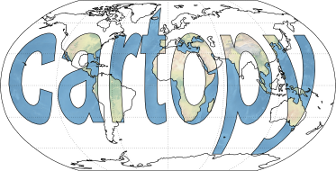cartopy.mpl.ticker.LatitudeFormatter#
- class cartopy.mpl.ticker.LatitudeFormatter(direction_label=True, degree_symbol='°', number_format='g', transform_precision=1e-08, dms=False, minute_symbol='′', second_symbol='″', seconds_number_format='g', auto_hide=True, decimal_point=None, cardinal_labels=None)[source]#
Bases:
_PlateCarreeFormatterTick formatter for latitude axes.
Tick formatter for latitudes.
When bound to an axis, the axis must be part of an axes defined on a rectangular projection (e.g. Plate Carree, Mercator).
- Parameters:
direction_label (optional) – If True a direction label (N or S) will be drawn next to latitude labels. If False then these labels will not be drawn. Defaults to True (draw direction labels).
degree_symbol (optional) – The character(s) used to represent the degree symbol in the tick labels. Defaults to ‘°’. Can be an empty string if no degree symbol is desired.
number_format (optional) – Format string to represent the longitude values when
dmsis set to False. Defaults to ‘g’.transform_precision (optional) – Sets the precision (in degrees) to which transformed tick values are rounded. The default is 1e-7, and should be suitable for most use cases. To control the appearance of tick labels use the number_format keyword.
dms (bool, optional) – Whether or not formatting as degrees-minutes-seconds and not as decimal degrees.
minute_symbol (str, optional) – The character(s) used to represent the minute symbol.
second_symbol (str, optional) – The character(s) used to represent the second symbol.
seconds_number_format (optional) – Format string to represent the “seconds” component of the longitude values. Defaults to ‘g’.
auto_hide (bool, optional) – Auto-hide degrees or minutes when redundant.
decimal_point (bool, optional) – Decimal point character. If not provided and
mpl.rcParams['axes.formatter.use_locale'] == True, the locale decimal point is used.cardinal_labels (dict, optional) – A dictionary with “south” and/or “north” keys to replace south and north cardinal labels, which defaults to “S” and “N”.
Note
A formatter can only be used for one axis. A new formatter must be created for every axis that needs formatted labels.
Examples
Label latitudes from -90 to 90 on a Plate Carree projection:
ax = plt.axes(projection=PlateCarree()) ax.set_global() ax.set_yticks([-90, -60, -30, 0, 30, 60, 90], crs=ccrs.PlateCarree()) lat_formatter = LatitudeFormatter() ax.yaxis.set_major_formatter(lat_formatter)
Label latitudes from -80 to 80 on a Mercator projection, this time omitting the degree symbol:
ax = plt.axes(projection=Mercator()) ax.set_global() ax.set_yticks([-90, -60, -30, 0, 30, 60, 90], crs=ccrs.PlateCarree()) lat_formatter = LatitudeFormatter(degree_symbol='') ax.yaxis.set_major_formatter(lat_formatter)
When not bound to an axis:
lat_formatter = LatitudeFormatter() ticks = [-90, -60, -30, 0, 30, 60, 90] lat_formatter.set_locs(ticks) labels = [lat_formatter(value) for value in ticks]
